Abstract
A series of 175 lambda phage carrying human inserts isolated from a library that is specific for the short arm of human chromosome 5 (5p) have been regionally mapped on 5p using a deletion mapping panel of 16 human-hamster cell hybrids, each of which contains a chromosome 5 with a different deletion in the short arm. Seventy-five single copy DNA fragments were screened with 12 restriction enzymes for their ability to detect restriction fragment length polymorphisms (RFLPs). Twenty-eight of these DNA fragments, which are located in 13 distinct physical regions of 5p, were found to detect RFLPs. These DNA markers make it possible to construct a linkage map that will span the entire length of 5p and will allow the relationship between genetic and physical distance for this region of the genome to be examined at a high level of resolution.
Full text
PDF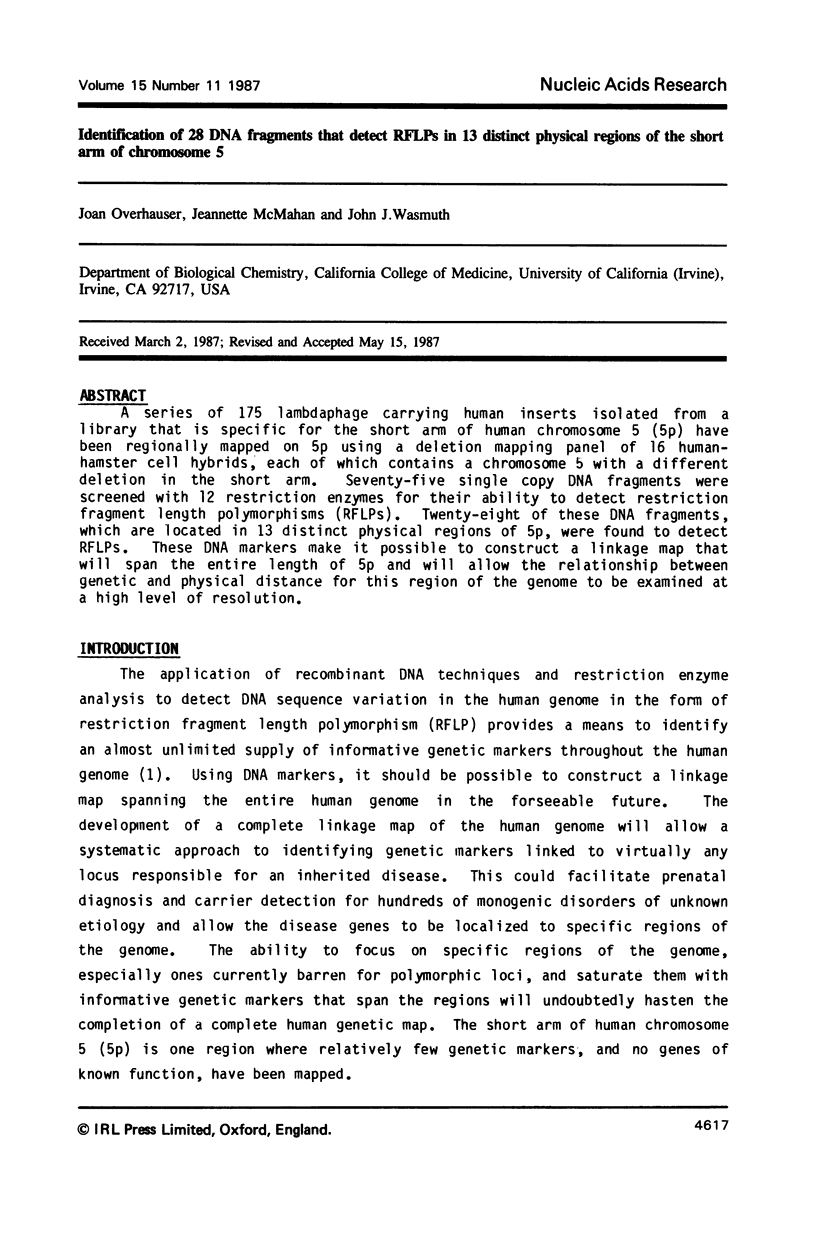
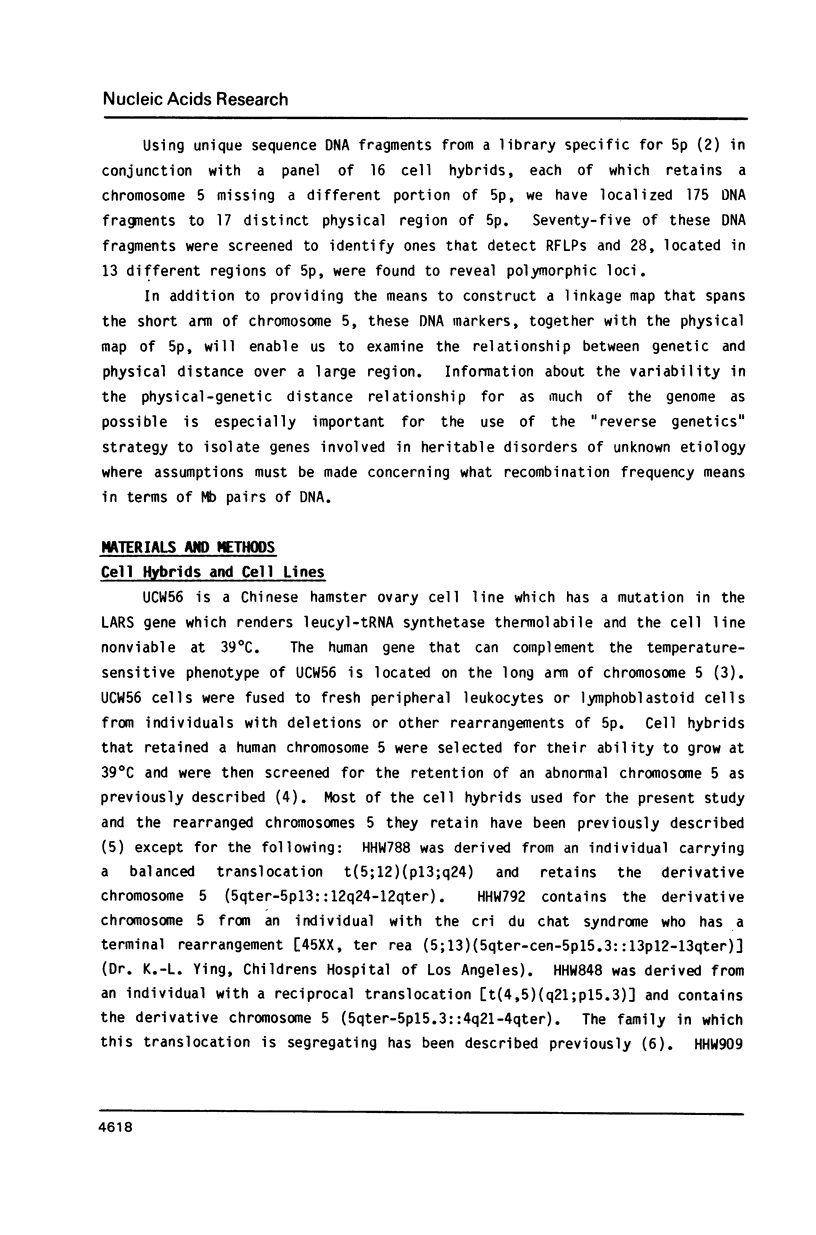
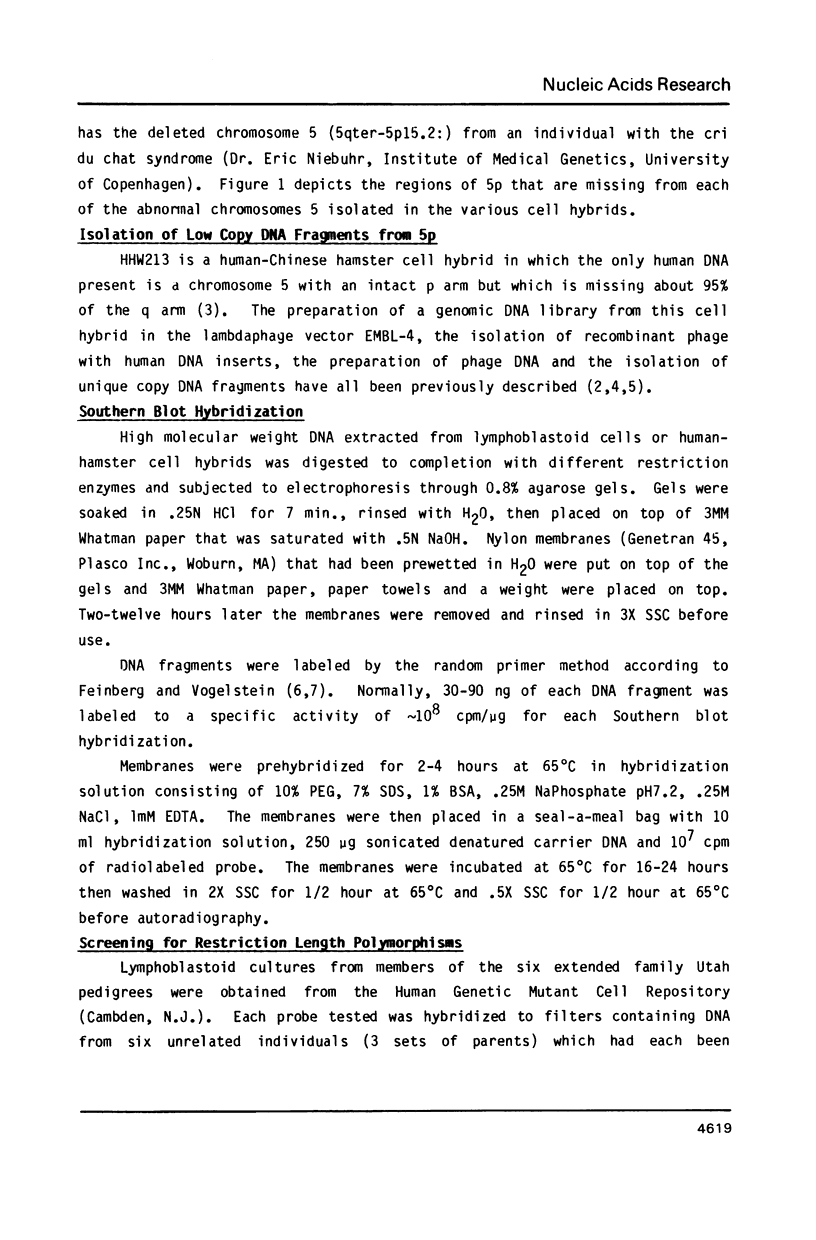
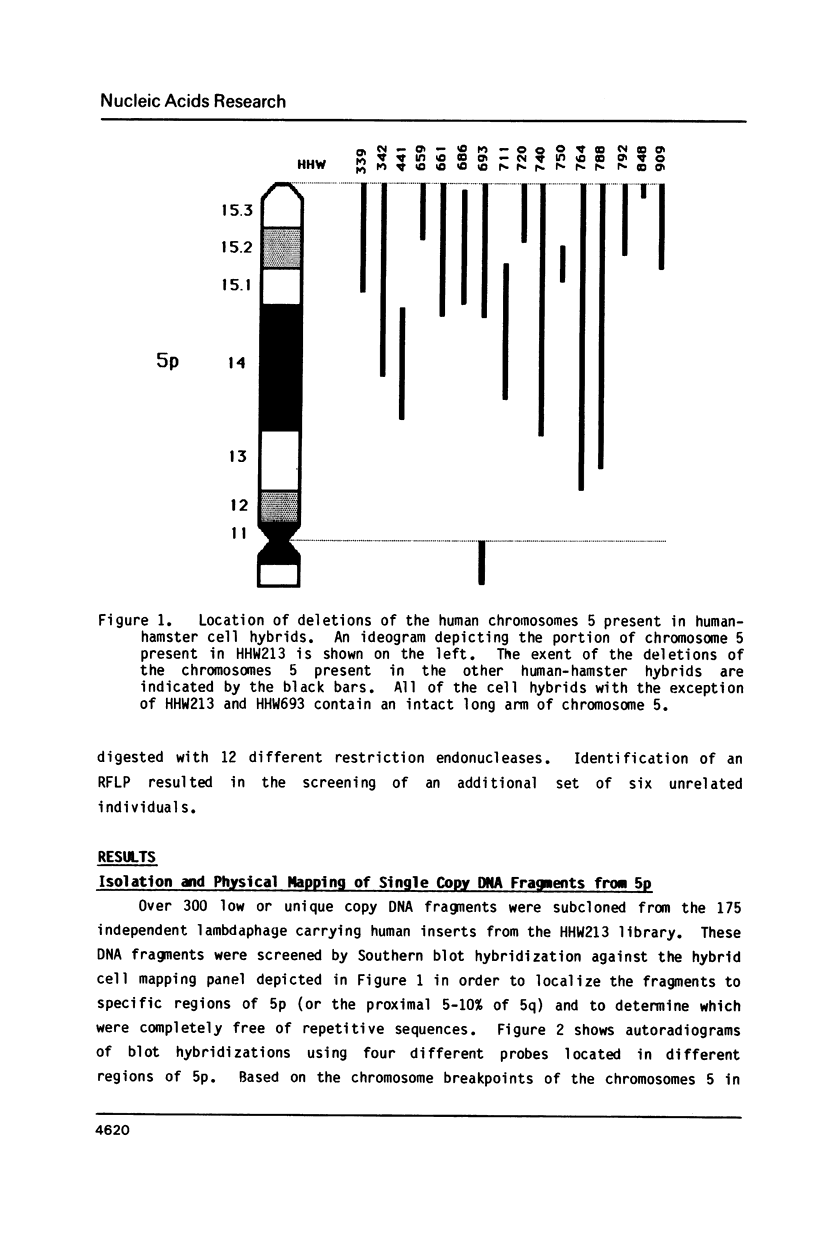
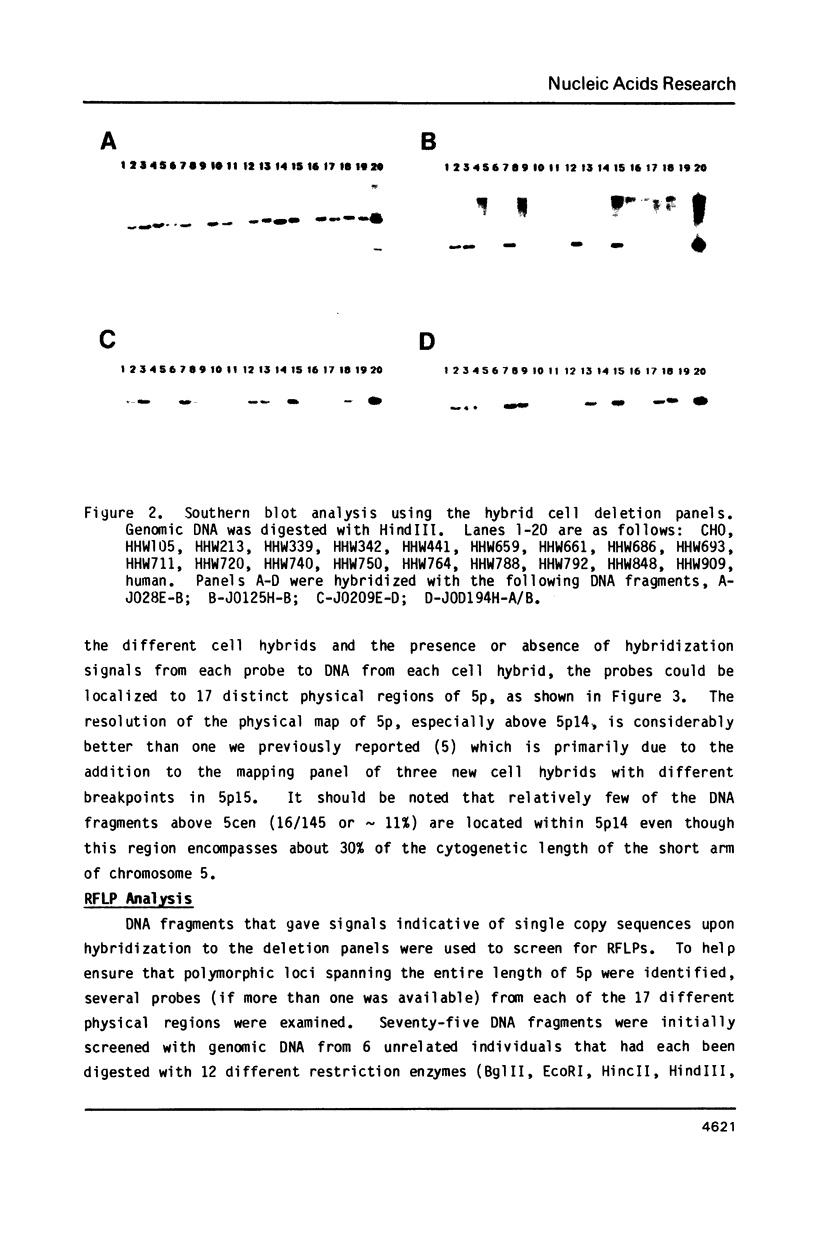
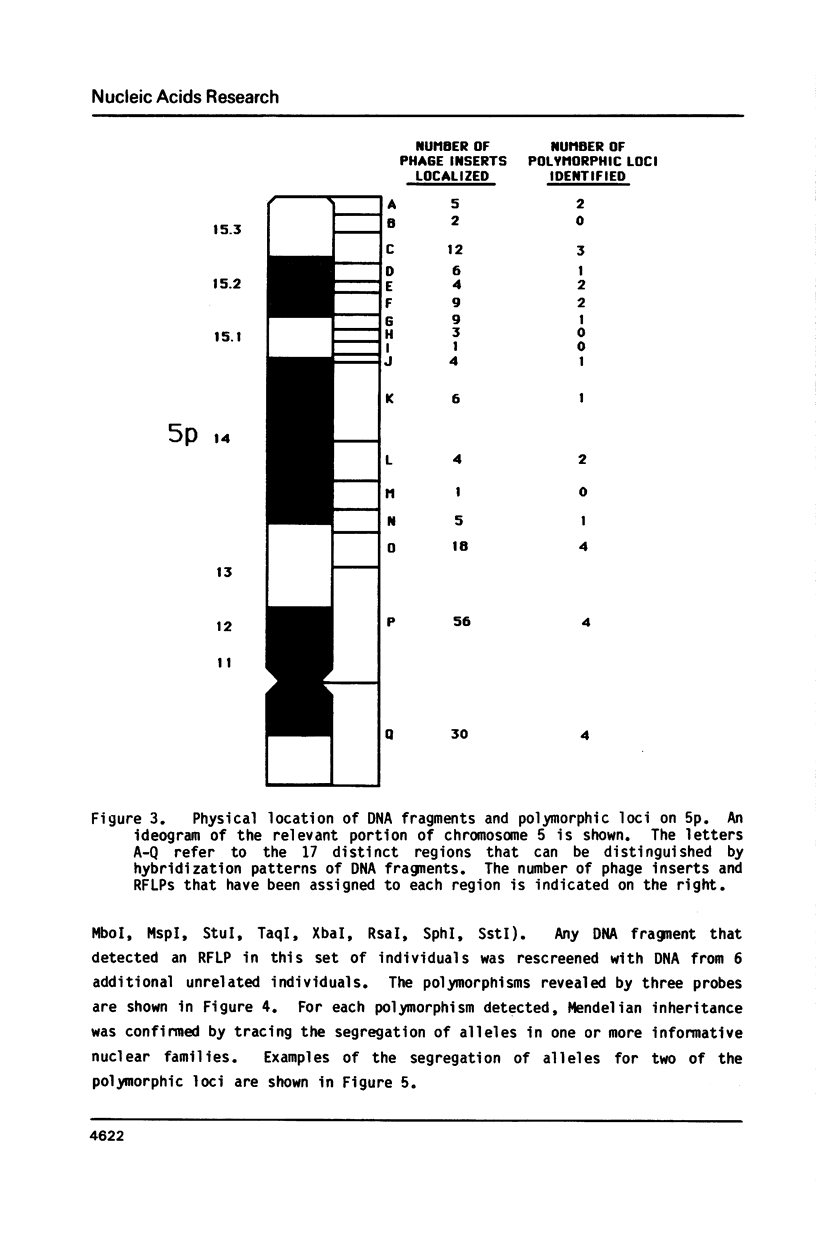
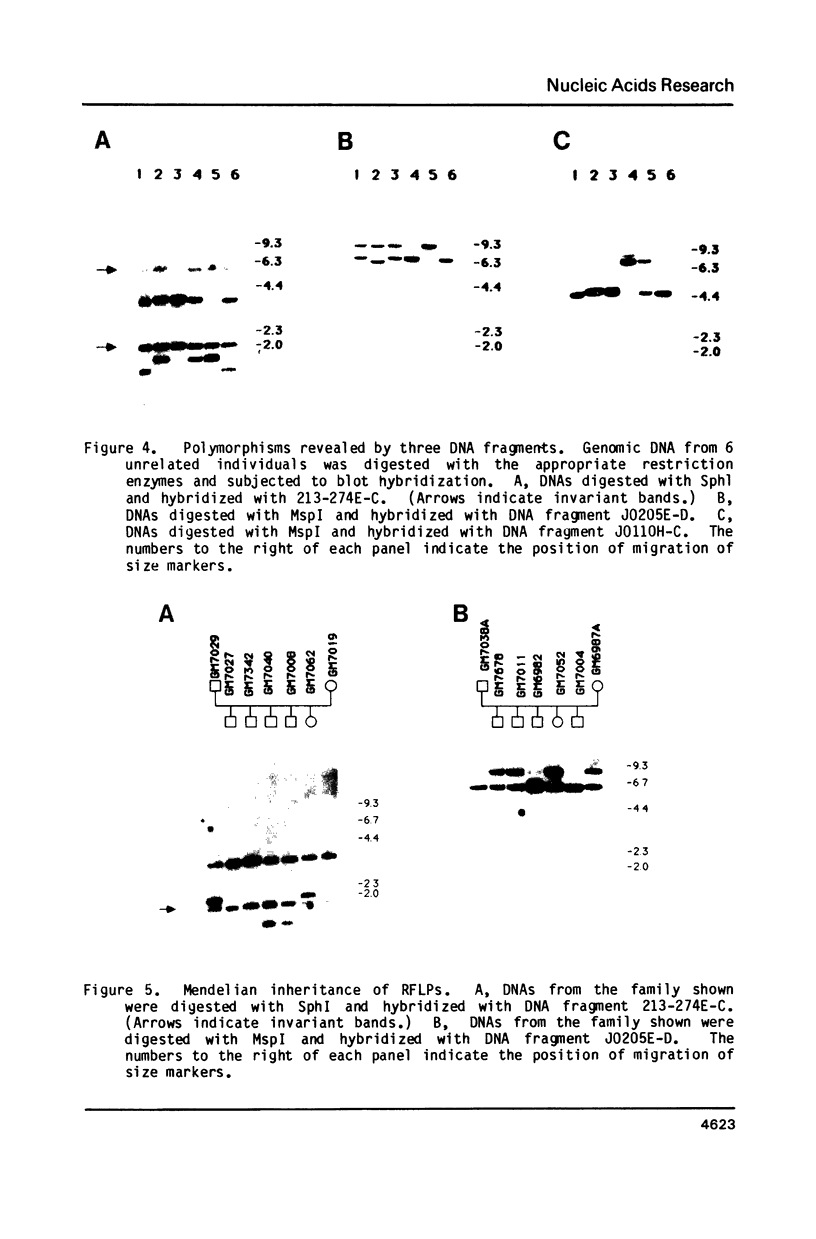
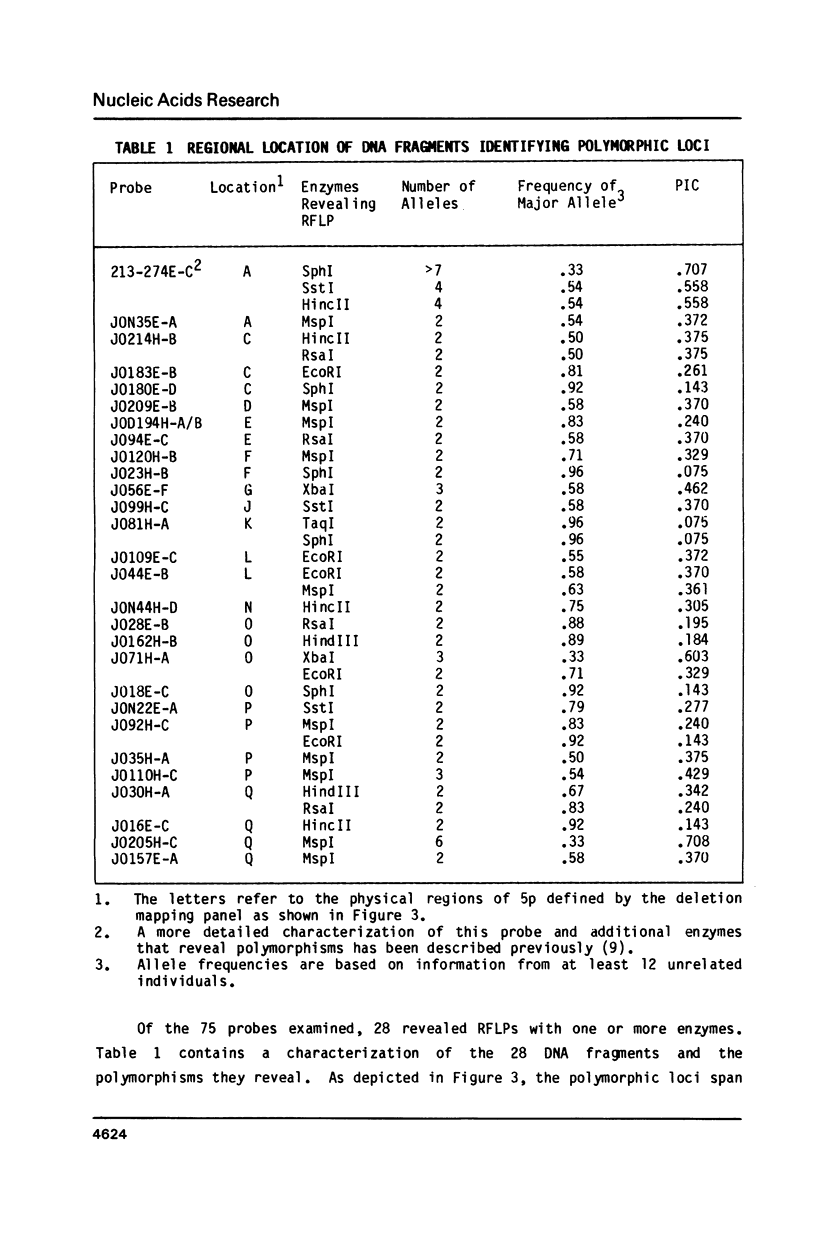
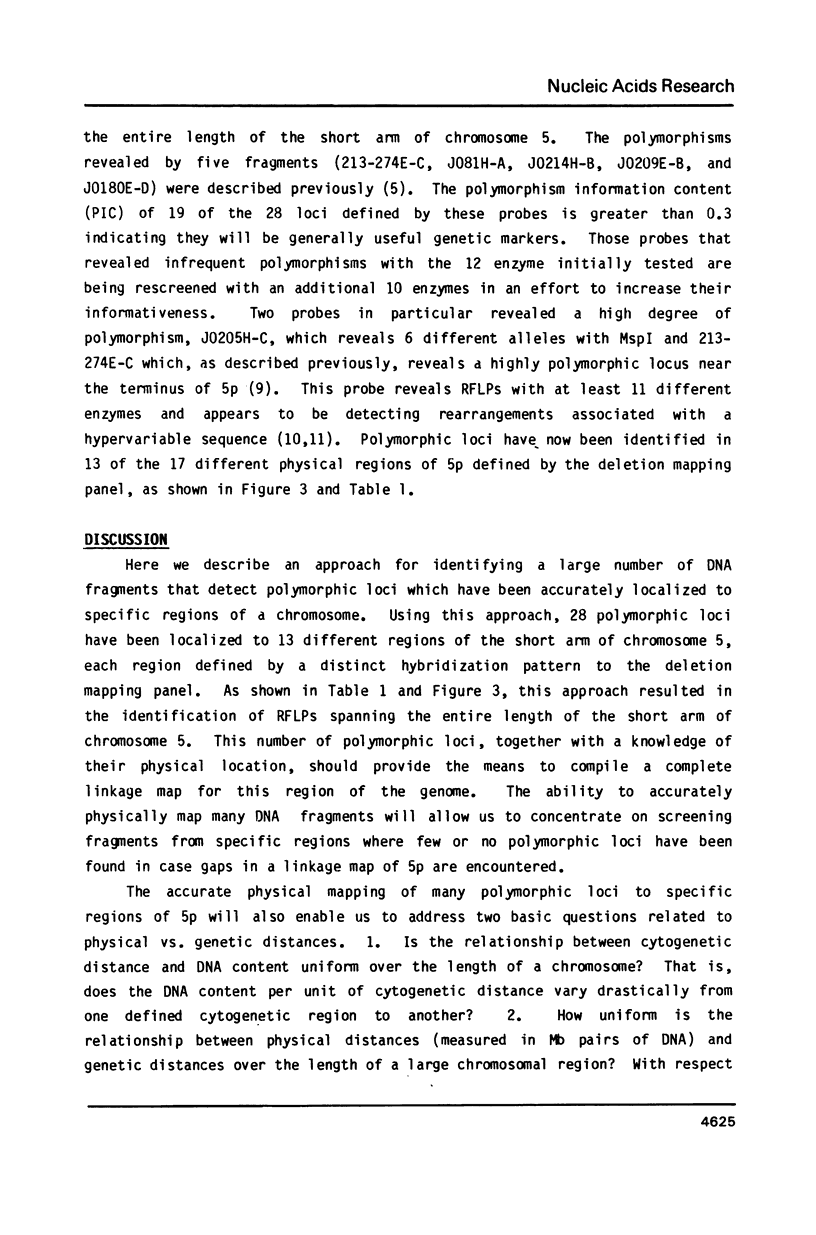
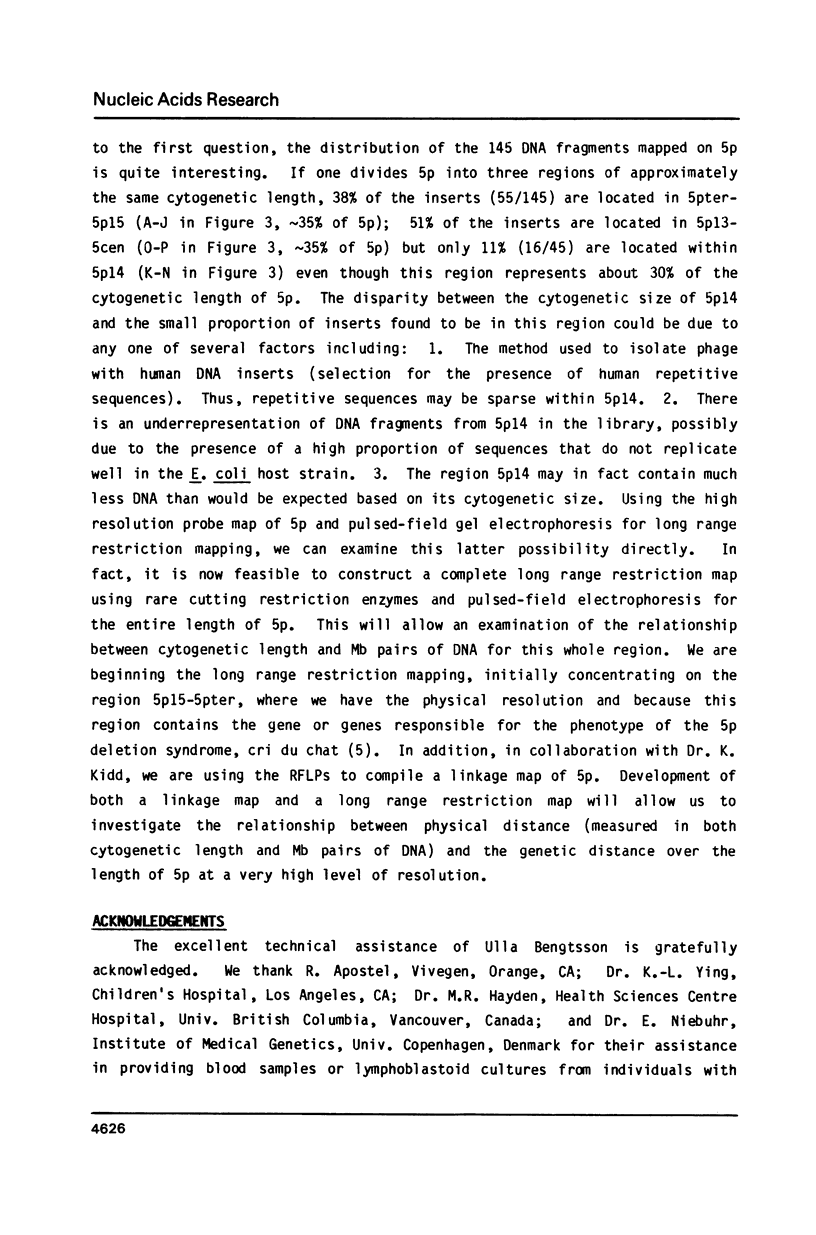

Images in this article
Selected References
These references are in PubMed. This may not be the complete list of references from this article.
- Botstein D., White R. L., Skolnick M., Davis R. W. Construction of a genetic linkage map in man using restriction fragment length polymorphisms. Am J Hum Genet. 1980 May;32(3):314–331. [PMC free article] [PubMed] [Google Scholar]
- Carlock L. R., Wasmuth J. J. Molecular approach to analyzing the human 5p deletion syndrome, cri du chat. Somat Cell Mol Genet. 1985 May;11(3):267–276. doi: 10.1007/BF01534683. [DOI] [PubMed] [Google Scholar]
- Dana S., Wasmuth J. J. Linkage of the leuS, emtB, and chr genes on chromosome 5 in humans and expression of human genes encoding protein synthetic components in human--Chinese hamster hybrids. Somatic Cell Genet. 1982 Mar;8(2):245–264. doi: 10.1007/BF01538680. [DOI] [PubMed] [Google Scholar]
- Feinberg A. P., Vogelstein B. "A technique for radiolabeling DNA restriction endonuclease fragments to high specific activity". Addendum. Anal Biochem. 1984 Feb;137(1):266–267. doi: 10.1016/0003-2697(84)90381-6. [DOI] [PubMed] [Google Scholar]
- Feinberg A. P., Vogelstein B. A technique for radiolabeling DNA restriction endonuclease fragments to high specific activity. Anal Biochem. 1983 Jul 1;132(1):6–13. doi: 10.1016/0003-2697(83)90418-9. [DOI] [PubMed] [Google Scholar]
- Froster-Iskenius U. G., Hayden M. R., Wang H. S., Kalousek D. K., Horsman D., Pfeiffer R. A., Schottky A., Schwinger E. A family with Huntington disease and reciprocal translocation 4;5. Am J Hum Genet. 1986 May;38(5):759–767. [PMC free article] [PubMed] [Google Scholar]
- Migone N., Feder J., Cann H., van West B., Hwang J., Takahashi N., Honjo T., Piazza A., Cavalli-Sforza L. L. Multiple DNA fragment polymorphisms associated with immunoglobulin mu chain switch-like regions in man. Proc Natl Acad Sci U S A. 1983 Jan;80(2):467–471. doi: 10.1073/pnas.80.2.467. [DOI] [PMC free article] [PubMed] [Google Scholar]
- Overhauser J., Beaudet A. L., Wasmuth J. J. A fine structure physical map of the short arm of chromosome 5. Am J Hum Genet. 1986 Nov;39(5):562–572. [PMC free article] [PubMed] [Google Scholar]
- Overhauser J., Golbus M. S., Schonberg S. A., Wasmuth J. J. Molecular analysis of an unbalanced deletion of the short arm of chromosome 5 that produces no phenotype. Am J Hum Genet. 1986 Jul;39(1):1–10. [PMC free article] [PubMed] [Google Scholar]
- Wyman A. R., White R. A highly polymorphic locus in human DNA. Proc Natl Acad Sci U S A. 1980 Nov;77(11):6754–6758. doi: 10.1073/pnas.77.11.6754. [DOI] [PMC free article] [PubMed] [Google Scholar]





